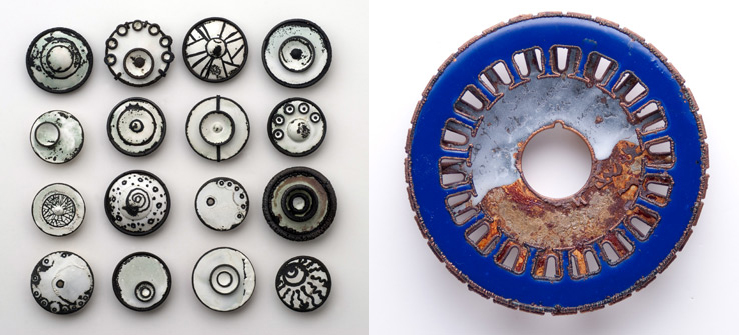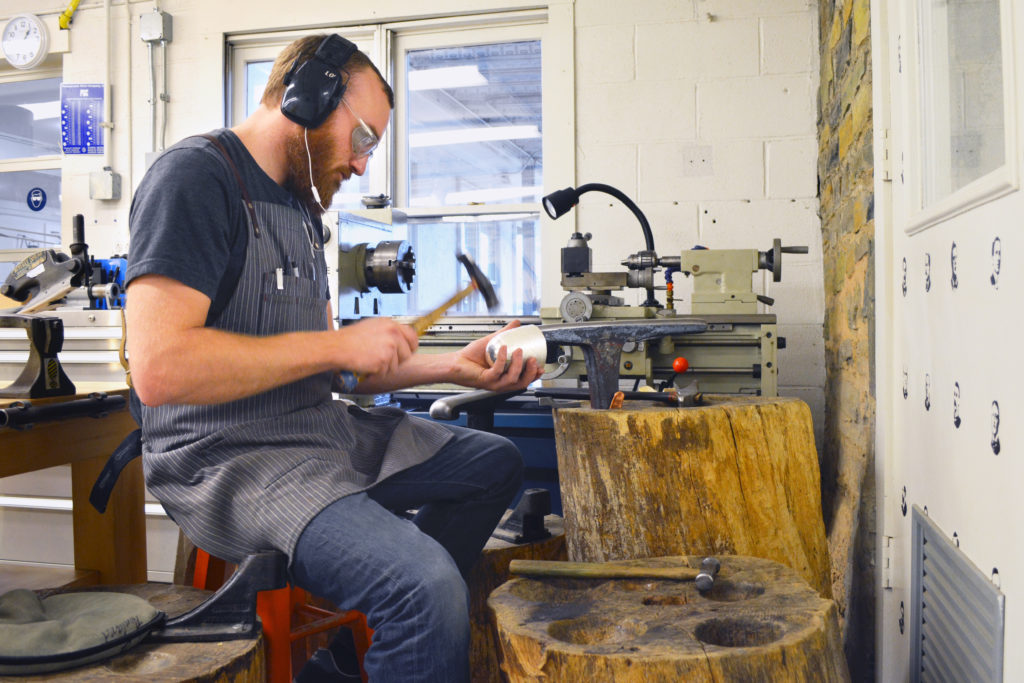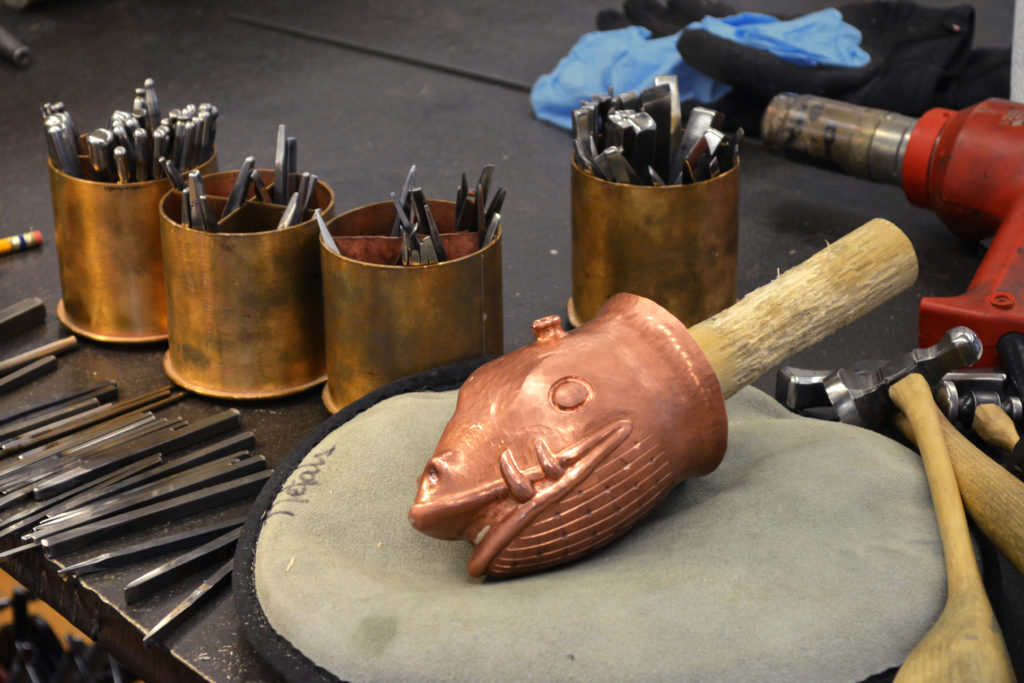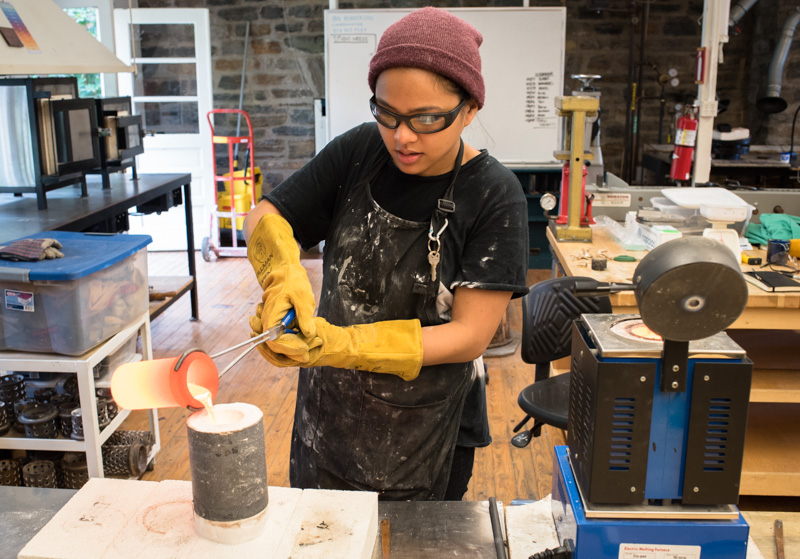
“Beautiful things have always affected my life, and I believe beauty is a powerful force in the world.” So Kristina Glick introduces her body of jewelry and metalwork. Her pieces are indeed beautiful, but those expecting extravagant gold or jewel-studded creations are imagining the work of the wrong artist. Kristina’s beauty is all about appreciation, interest, and a keen eye. “I am often drawn towards the quiet and the subtle: the texture of a rusty nail, a discarded book, pieces of a magnolia seed, or the curve of a beach stone,” she explains. Her work masterfully combines found objects and traditional metalworking techniques into pieces that are rich with color, texture, and unexpected details.
This fall, Kristina will be bringing her dedication to beauty—and her sizable skills—to the Penland metals studio. From September 25 to November 18, she will be teaching the concentration Counterbalance: Enameling, Electroforming & Found Objects. The course will be eight weeks of exploring techniques, materials, and the qualities that make a piece uniquely beautiful to each of us.
“I hope that what I create may someday slip into someone else’s life and tip the balance of their world a little further in the direction of beauty,” Kristina says. If your world could use a bit more beauty in the everyday (and whose couldn’t?), then Kristina’s workshop might be the perfect thing. Registration is now open, and a couple work-study scholarships are still available. For more information, contact the Penland registrar at 828-765-2359, ext 1306.

Counterbalance: Enameling, Electroforming & Found Objects
Kristina Glick—This workshop will start with the basics of liquid enamels including techniques such as layering, sgraffito, stamping, stenciling, and champlevé. Then we’ll explore electroforming to create organic, textured copper surfaces that will highlight and enhance the enamel. We’ll use found objects as inspiration and incorporate them into finished work. With an emphasis on process and experimentation, we’ll work toward the design and execution of jewelry pieces or wall panels. The workshop will include basic fabrication skills: sawing, soldering, cold connections, etching, and finishing. All levels. Code F00MA
Associate professor at Goshen College (IN); other teaching: Idyllwild (CA), Arizona Designer Craftsmen, Goshen Jewelers Guild (IN); exhibitions: JAS (NC), Touching Mystery (OH); work published in 500 Gemstone Jewels and 500 Enameled Objects (Lark Books); representation: Angelo (VA).
kristinaglick.com
REGISTER NOW

Save
Save







